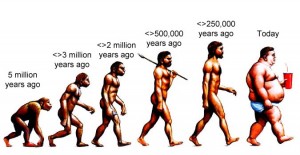Paleolithic Diet Facts
Paleolithic Diet Facts
The Hunter-Gatherer diet is also known as the Paleo or Paleolithic Diet. Our diet has changed over the centuries due to intensive farming, necessary to feed a rapidly growing population.We consider our modern diet to be healthy and natural, but it includes modern farmed foods including wheat, grains, dairy, legumes, soya and maize which are not a traditionally natural part of our diet.
As our population grew, it became necessary to develop of farming processes in order to be able to feed the ever increasing numbers of people. Corn and grains we a cheap solution to meeting our immediate needs but little thought was put into the long term implications of how this would alter our core diets.
A Natural Caveman Menu
For thousands of years we existed as hunter-gatherers, either killing or finding different foods everyday to eat. Our bodies are designed to extract maximum goodness from a typical hunter-gatherers menu, fish or meat one day, fruit or berries the next, then some nuts or roots or vegetables and so on.
Your stomach produces different enzymes in order to digest different food types. A different enzyme for proteins and carbohydrates. It’s only been relatively recently (the past 10,000 years) that we have started eating meals containing combined foods, and that is the blink of an eye in evolutionary terms, and that is why many people struggle to properly digest meals containing mixed food groups.
Your gut will try to generate different enzymes to breakdown each food stuff, but together these enzymes dilute each other and so your food will not be digested as well.
What Foods You Should Avoid
The Paleolithic diet is centred on avoiding modern processed foods and foods we aren’t naturally accustomed to digesting, including; wheat, potatoes, grains, legumes, refines salts, dairy, refined sugars and refined oils. These foods are alien to us and we can’t easily digest them, the refined foods are usually converted into body fat as our body can’t do much else with them. You should avoid anything that has been processed in any way and only eat nature, organic foods.
What Can I Eat On The Paleolithic Diet Then?
The diet of a hunter-gatherer or caveman was a simple organic diet of foods that were naturally available to them, including; meat (organic naturally), fish, fruit, fungi, eggs, roots, nuts and vegetables. These are our natural diet, and one that we are designed to eat and digest efficiently.
Cavemen would generally eat these foods as they found them rather than make up complex mixed meals mixing proteins and carbohydrates which is the modern norm. With well thought out recipes it is still possible to eat fantastic tasting food that you will be able to easily digest and absorb the most nutrition from.

